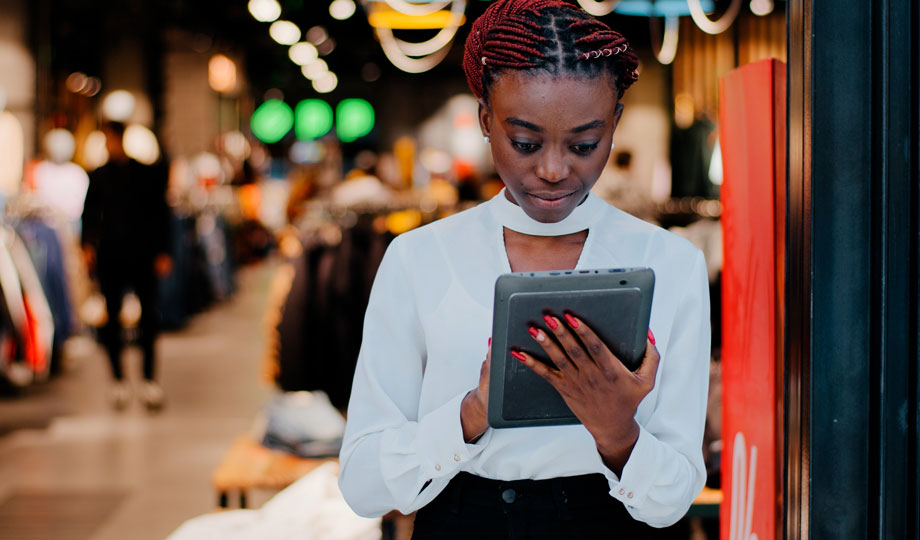As the uncertainty generated by the pandemic gripped several sectors, the retail world took up the challenge to reinvent itself. Lack of visibility, staffing constraints, and remote work pushed retailers to adopt new technologies.
Today, several innovative tools are essential for the stores’ growth and development, responding to consumers’ new and changing needs.
It is undeniable that technology is a strategic ally for industries, especially in highly competitive ones, such as retail. Knowing the latest trends and their applications can be vital to keeping stores on the wave’s crest. However, each implementation involves high resources and time investment, so it is never too much to stop and evaluate their value contribution on a day-to-day basis.
Below, some tools that have burst into 2021 that will continue to impact 2022.
AI and data analytics
While artificial intelligence and data analytics are nothing new, they have grown in popularity in retail. Their contribution to a deep understanding of customer tastes and preferences and the ability to identify market trends makes them especially useful in a context of high uncertainty and volatility.
An example of their use is beacons. These battery-powered wireless devices, which emit Bluetooth signals, are being used more and more frequently inside stores. Their ability to identify customers’ smartphones allows retailers to obtain relevant information about shopping patterns, hot spots, detect movement within the sales floor, and open the possibility of delivering personalized content directly to each customer’s device. Stores like Macy’s and Finnish chain K-supermarket have already implemented marketing campaigns and promotions based on customer location.
This technology also identifies hot zones within stores at a high detail level, opening up opportunities to optimize product distribution and prioritize replenishment within high-traffic areas.
Digitization of stores
With the push of the pandemic, the shopping processes’ convenience has been prioritized over other factors, such as price. In response, cashless payment systems such as credit cards and e-wallets like Apple Wallet and Google Pay are rising and will continue to grow in the coming years. According to Ayden studies, 72% of consumers between 18 and 39 years old prefer not to use cash as a means of payment, and 33% stopped using physical cards, favoring digital methods.
The digitization process is also driven by millennials and their positioning as the leading group of the purchasing force. This generation of digital natives values the shopping experience and personalized options, regardless of the purchase channel. Accenture Marketing studies globally indicate that 68% of millennials expect an integrated and seamless experience, regardless of the channel. The use of technologies such as interactive displays and augmented reality seek to foster new experiences and more interaction with customers.
Robots
Robots and their uses have advanced enormously in recent years, thanks to technological progress that allows finer and more precise movements that enable the handling of delicate products.
Advances in robotics have allowed them to expand their presence in various processes and places within retail. Its uses have been deployed in multiple areas, especially in automating repetitive tasks of low complexity. The year 2021 saw the development of cleaning robots, capable of identifying spills and odors to assist in automatic cleaning; security robots, integrated with camera systems to support the closing of sales and doors where a person would not easily reach; warehouse robots, which help the replenishment process in the store; and drones, which work in logistics and last-mile deliveries, among others.
How to adopt technologies and not fail in the attempt
Consumer expectations continue to grow, and technological development continues to burst onto the market, dazzling with new features and usability capabilities. But since “all that glitters is not gold,” it is necessary to stop and genuinely understand the needs of customers and internal users to validate which technologies will make a real value contribution to the company.
Today, the biggest challenge for retailers is not access to technology but knowing how to select and implement the right ones, which are truly relevant in the real world and have a tangible impact on results.
For this, we give you three tips when selecting a technological solution for your business.
- Define objectives: Technology is not an end but a means to achieve clear objectives aligned with the business strategy. Before even thinking about technological solutions, the first step is to define the objectives and what you want to achieve: Are you looking to reduce process time, waste, or the need for person-hours? Do you want to increase SLA compliance, product availability, or customer engagement? The definition of the objective will guide the selection of the appropriate tool.
- Forget the glamour: While the market is full of mind-blowing innovations that seem straight out of science fiction movies, retailers must make a reality check. It is important to remember that the answer is not to adopt all technologies but to define which ones are the most valuable and make the most sense for the business and consumer needs. Therefore, it will have the most significant impact on the experience and results. The important thing is to achieve the defined objectives, not adopt all new developments.
- Measure results: What cannot be measured cannot be managed. Retailers should decide in advance how results will be measured, which indicators and KPIs will be related to applying the new technology, and how teams will validate that the implemented solution effectively has the expected impact. It goes without saying that it is essential to put these measurements into practice to validate the ROI of the investment and answer critical questions such as whether the technology is solving or contributing to achieving the objective.
At Frogmi, we know that retailers face significant challenges and that technology is a fundamental enabler. However, we recognize that identifying and selecting the right solution is not always an easy process.
Our retail experience has led us to create a flexible solution that adapts to your business needs, not the other way around. We design the implementation based on a consultative process and continuous support, with constant communication with our customer success team, to deliver a customized tool consistent with your organization.
The focus on management and measuring results are fundamental for us. Our solution delivers real-time information for the construction of KPIs and Business Intelligence dashboards that favor data-driven decision-making.
When looking for new technology, the selection process is essential to avoid being left with high investments that do not achieve the desired impact. Therefore, we invite you to ask the following questions: What was the impact of the last technological investment made in your organization? What was the objective of this investment? Were the goals achieved? What indicators were improved?




